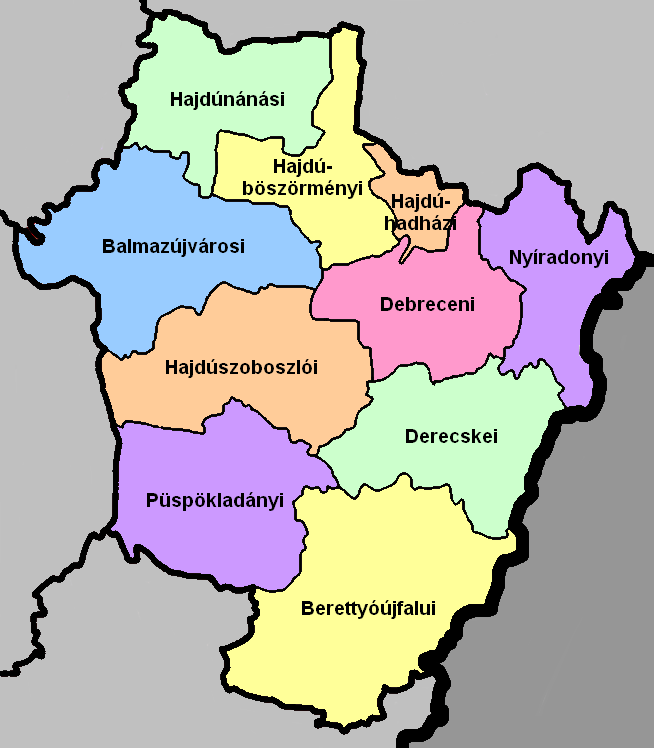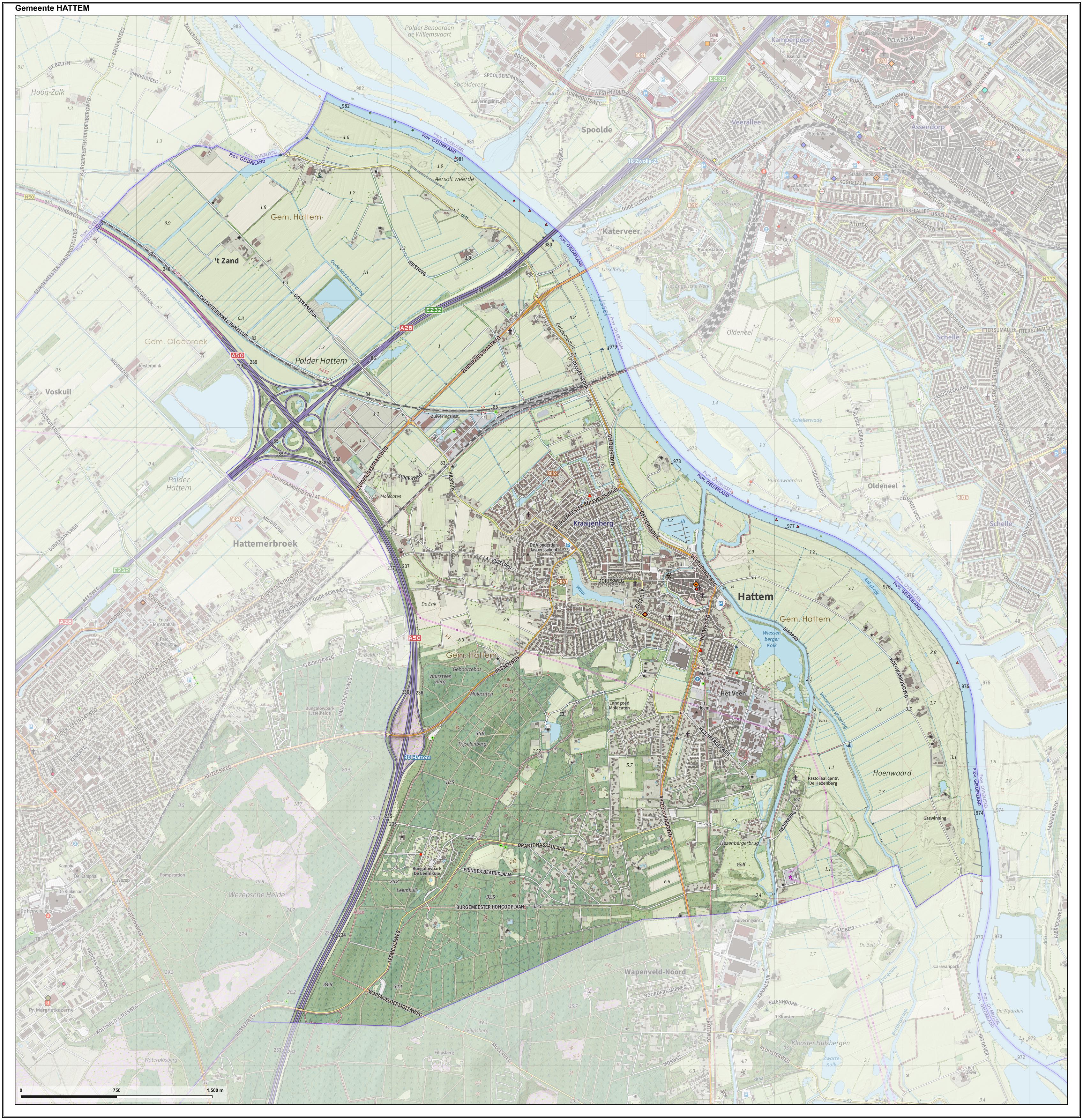|
Püspökladány
Püspökladány (pronounced ) is the sixth largest town of Hajdú-Bihar county in North Eastern Hungary with a population of approximately 16,000 people. It is located southwest of Debrecen at the juncture of three regions: Sárrét, Hortobágy and Nagykunság. It is an important transportation hub at the junction of national highway 4 from Budapest to Záhony, and national highway No. 42 from Romania to Biharkeresztes. The town is served by four different rail lines. Twin towns – sister cities Püspökladány is twinned with: * Fischamend, Austria * Ghindari, Romania * Hämeenlinna, Finland * Hattem, Netherlands * Krasnystaw Krasnystaw ( uk, Красностав, Krasnostav) is a town in southeastern Poland with 18 630 inhabitants (31 december 2019). Situated in the Lublin Voivodeship (since 1999), previously in Chełm Voivodeship (1975–1998). It is the capital o ..., Poland References External links * in HungarianHealth Spa in Püspökladány [...More Info...] [...Related Items...] OR: [Wikipedia] [Google] [Baidu] |
Püspökladány District
Püspökladány ( hu, Püspökladányi járás) is a district in south-western part of Hajdú-Bihar County. ''Püspökladány'' is also the name of the town where the district seat is found. The district is located in the Northern Great Plain Statistical Region. This district is a part of Hajdúság historical and geographical region. Geography Püspökladány District borders with Hajdúszoboszló District to the north, Derecske District and Berettyóújfalu District to the east, Szeghalom District ''(Békés County)'' to the south, Karcag District ''(Jász-Nagykun-Szolnok County)'' to the west. The number of the inhabited places in Püspökladány District is 12. Municipalities The district has 2 towns, 3 large villages and 7 villages. (ordered by population, as of 1 January 2012) The bolded municipalities are cities, ''italics'' municipalities are large villages. Demographics In 2011, it had a population of 40,426 and the population density was 55/km². Ethnicity Bes ... [...More Info...] [...Related Items...] OR: [Wikipedia] [Google] [Baidu] |
Hajdú-Bihar County
Hajdú-Bihar ( hu, Hajdú-Bihar megye, ) is an administrative county (comitatus or megye) in eastern Hungary, on the border with Romania. It shares borders with the Hungarian counties Szabolcs-Szatmár-Bereg, Borsod-Abaúj-Zemplén, Jász-Nagykun-Szolnok and Békés. The capital of Hajdú-Bihar county is Debrecen. Together with Bihor County in Romania it constitutes the Biharia Euroregion. Geography The area of the county does not form a geographical unit; it shares several features with the neighbouring areas: from northeast the sand hills of the Nyírség spread over the county borders. The western part is the Hortobágy National Park ("Puszta"), a large flat area of the country. The county of Hajdú-Bihar occupies the eastern part of Hungary. Most of its territory is completely flat and is part of the Pannonian Plain region (called the Grand Plain in the country). The highest point hardly rises over 170.5 metres in the north. It seems that the county slopes to the south be ... [...More Info...] [...Related Items...] OR: [Wikipedia] [Google] [Baidu] |
Districts Of Hungary
Districts of Hungary are the second-level divisions of Hungary after counties. They replaced the 175 subregions of Hungary in 2013. Altogether, there are 174 districts in the 19 counties, and there are 23 districts in Budapest. Districts of the 19 counties are numbered by Arabic numerals and named after the district seat, while districts of Budapest are numbered by Roman numerals and named after the historical towns and neighbourhoods. In Hungarian, the districts of the capital and the rest of the country hold different titles. The districts of Budapest are called ''kerületek'' (lit. district, pl.) and the districts of the country are called ''járások.'' By county Baranya County Bács-Kiskun County Békés County Borsod-Abaúj-Zemplén County Csongrád-Csanád County Fejér County Győr-Moson-Sopron County Hajdú-Bihar County Heves County Jász-Nagykun-Szolnok County Komárom-Esztergom County Nógrád County Pest County ... [...More Info...] [...Related Items...] OR: [Wikipedia] [Google] [Baidu] |
List Of Cities And Towns Of Hungary
Hungary has 3,152 Municipality, municipalities as of July 15, 2013: 346 towns (Hungarian term: ''város'', plural: ''városok''; the terminology doesn't distinguish between city, cities and towns – the term town is used in official translations) and 2,806 villages (Hungarian: ''község'', plural: ''községek'') of which 126 are classified as large villages (Hungarian: ''nagyközség'', plural: ''nagyközségek''). The number of towns can change, since villages can be elevated to town status by act of the President. The capital Budapest has a special status and is not included in any county while 23 of the towns are so-called urban counties (''megyei jogú város'' – town with county rights). All county seats except Budapest are urban counties. Four of the cities (Budapest, Miskolc, Győr, and Pécs) have agglomerations, and the Hungarian Statistical Office distinguishes seventeen other areas in earlier stages of agglomeration development. The largest city is the capital, Bu ... [...More Info...] [...Related Items...] OR: [Wikipedia] [Google] [Baidu] |
Hämeenlinna
Hämeenlinna (; sv, Tavastehus; krl, Hämienlinna; la, Tavastum or ''Croneburgum'') is a city and municipality of about inhabitants in the heart of the historical province of Tavastia and the modern province of Kanta-Häme in the south of Finland. Hämeenlinna is the oldest inland city of Finland and was one of the most important Finnish cities until the 19th century. It remains an important regional center. The medieval Häme Castle (also ''Tavastia Castle''; fi, Hämeen linna) is located in the city. Hämeenlinna is known as the birthplace of Finnish national composer Jean Sibelius. Today, it belongs to the region of Tavastia Proper (Kanta-Häme), and before 2010 it was the residence city for the Governor of the province of Southern Finland. Nearby cities include the capital Helsinki (), Tampere () and Lahti (), the regional center of Päijänne Tavastia (Päijät-Häme). The neighboring municipalities of Hämeenlinna are Akaa, Asikkala, Hattula, Hausjärvi, Hollola, ... [...More Info...] [...Related Items...] OR: [Wikipedia] [Google] [Baidu] |
Nagykunság
Nagykunság ("Greater Cumania", la, Cumania Major) is a historical and geographical region in Hungary situated in the current Jász-Nagykun-Szolnok county between Szolnok and Debrecen. Like other historical European regions called Cumania, it is named for the Cumans, a nomadic tribe of pagan Kipchaks that settled the area. Its territory is 1,196 km². See also *Kunság (Cumania) *Kiskunság Kiskunság ("Little Cumania", la, Cumania Minor) is a historical and geographical region in Hungary situated in the current between Kalocsa and Szeged. Its territory is 2,423 km2. Like other historical European regions called Cumania, it is na ... (Little Cumania) References Historical regions in Hungary Historical regions in the Kingdom of Hungary {{Jasz-geo-stub ... [...More Info...] [...Related Items...] OR: [Wikipedia] [Google] [Baidu] |
Hattem
Hattem () is a municipality and a town in the eastern Netherlands. The municipality had a population of in . The municipality includes the hamlet of 't Zand. Name origin The name “Hattem” is a typical farmyard name. The exact origin of “Hattem” is yet unclear. In general two explanation exist. Hattem would be the ‘heem’ (home) of a people who belong to the tribe of Chattuarii (or Hattuarii or Hatten). A second origin could refer to the leader of a people under the leader Hatto. This fits with the fact that a lot of farmyard names are deduced from persons names. History A document referring to Hattem is found is dated around 800. This document is the Codex Laureshamensis, in which the settlement Hattem is mentioned because two farmhouses in this place are donated to the Lorsch abbey. Established as parish Despite this early statement, no church or chapel was built in Hattem. In 1176 Hattem became a parish (‘kerspel’). The chapel, measuring 17,5 by 9,5 meter, was ... [...More Info...] [...Related Items...] OR: [Wikipedia] [Google] [Baidu] |
Ghindari
Ghindari ( hu, Makfalva, Hungarian pronunciation: ; german: Eicheldorf) is a commune in Mureș County, Romania. It lies in the Székely Land, an ethno-cultural region in eastern Transylvania. Component villages The commune is composed of five villages: Trei Sate village, in its turn, is composed of three hamlets: Cioc (''Csókfalva''), Hotești (''Atosfalva''), and Ștefănești (''Székelyszentistván''). History Until 1918, the villages belonged to the Maros-Torda County of the Kingdom of Hungary. After the Hungarian–Romanian War of 1918–19 and the Treaty of Trianon of 1920, the area became part of the Romania. In 2004, Chibed broke away to form an independent commune. Demographics The commune has an absolute Székely Hungarian majority. According to the 2011 census, it has a population of 3,250, of which 88.43% are Hungarian and 7.08% Roma. See also * List of Hungarian exonyms (Mureș County) Gallery File:Székelyabod tábla.JPG, Abud File:Székelyabod ... [...More Info...] [...Related Items...] OR: [Wikipedia] [Google] [Baidu] |
Fischamend
Fischamend () is a town in the district of Bruck an der Leitha District, Bruck an der Leitha in the Austrian state of Lower Austria. It belonged to Wien-Umgebung District which was dissolved in 2016. Population Geography Fischamend lies in the "Industrial Quarter" in Lower Austria. References Cities and towns in Bruck an der Leitha District {{LowerAustria-geo-stub ... [...More Info...] [...Related Items...] OR: [Wikipedia] [Google] [Baidu] |
Sister City
A sister city or a twin town relationship is a form of legal or social agreement between two geographically and politically distinct localities for the purpose of promoting cultural and commercial ties. While there are early examples of international links between municipalities akin to what are known as sister cities or twin towns today dating back to the 9th century, the modern concept was first established and adopted worldwide during World War II. Origins of the modern concept The modern concept of town twinning has its roots in the Second World War. More specifically, it was inspired by the bombing of Coventry on 14 November 1940, known as the Coventry Blitz. First conceived by the then Mayor of Coventry, Alfred Robert Grindlay, culminating in his renowned telegram to the people of Stalingrad (now Volgograd) in 1942, the idea emerged as a way of establishing solidarity links between cities in allied countries that went through similar devastating events. The comradesh ... [...More Info...] [...Related Items...] OR: [Wikipedia] [Google] [Baidu] |
Biharkeresztes
Biharkeresztes is a town in Hajdú-Bihar county, in the Northern Great Plain region of eastern Hungary. Geography It covers an area of and has a population Population typically refers to the number of people in a single area, whether it be a city or town, region, country, continent, or the world. Governments typically quantify the size of the resident population within their jurisdiction using a ... of 4149 people (2015). References External links * in Hungarian Populated places in Hajdú-Bihar County {{Hajdu-geo-stub ... [...More Info...] [...Related Items...] OR: [Wikipedia] [Google] [Baidu] |
Romania
Romania ( ; ro, România ) is a country located at the crossroads of Central Europe, Central, Eastern Europe, Eastern, and Southeast Europe, Southeastern Europe. It borders Bulgaria to the south, Ukraine to the north, Hungary to the west, Serbia to the southwest, Moldova to the east, and the Black Sea to the southeast. It has a predominantly Temperate climate, temperate-continental climate, and an area of , with a population of around 19 million. Romania is the List of European countries by area, twelfth-largest country in Europe and the List of European Union member states by population, sixth-most populous member state of the European Union. Its capital and largest city is Bucharest, followed by Iași, Cluj-Napoca, Timișoara, Constanța, Craiova, Brașov, and Galați. The Danube, Europe's second-longest river, rises in Germany's Black Forest and flows in a southeasterly direction for , before emptying into Romania's Danube Delta. The Carpathian Mountains, which cross Roma ... [...More Info...] [...Related Items...] OR: [Wikipedia] [Google] [Baidu] |

_of_Hungary.png)



.jpg)
